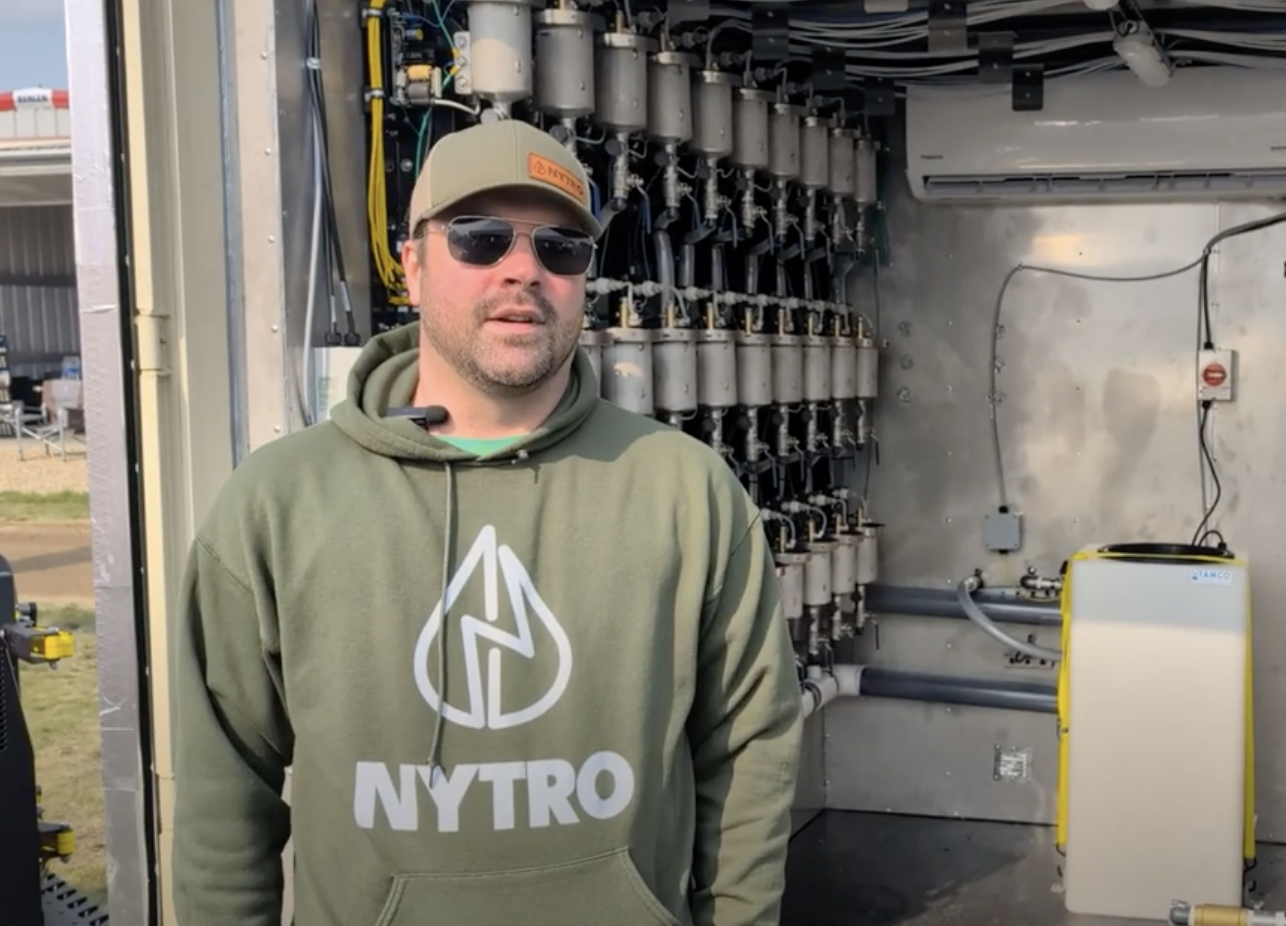Roger Andreiuk says farmers can effectively move research from the lab to the farm and profit from the experience.
“New input products are often testing at the plot scale or even at small field scale, but they aren’t usually tested on your farm, in your soil, in your climate,” said the agronomist with Alberta’s Reduced Tillage Linkages.
He said farmers have the opportunity to test products and agronomic strategies on their own farms without committing to large scale trials.
“But you need to take a scientific approach to ensure the information you get back is reliable.”
Read Also

VIDEO: Green Lightning and Nytro Ag win sustainability innovation award
Nytro Ag Corp and Green Lightning recieved an innovation award at Ag in Motion 2025 for the Green Lightning Nitrogen Machine, which converts atmospheric nitrogen into a plant-usable form.
He said common on-farm tests include variety trials and fertilizer efficiency tests and can be as small as a single plot or as large as a split field.
Andreiuk offers seven steps for successful on-farm research:
- Partner up.
- Set an objective.
- Select treatment and check plants.
- Site selection.
- Carefully design the plot layout.
- Accurate record keeping and data collection.
- Objective evaluation of the results.
Ed Seidle of Seidle Seed Farm at Medstead, Sask., has been conducting his own research for more than four decades.
“I’ve worked with some of the best researchers in Canada. I’ve learned from them and I dare say they have learned from this old farmer, too. It goes both ways, but as farmers we can create opportunities for (researchers and companies) and for ourselves,” said the seed grower from northeastern Saskatchewan.
“You learn what works in your own area, but often you learn what you can change about your own farming to be more effective and efficient, beyond the information that was readily available to you.”
For example, Seidle said producers can test economic relationships between the costs of various herbicide applications and yield or compare the cost of cultural weed control with alternative chemical approaches.
“You can learn a great deal, but you need to take a scientific approach for it to be meaningful.”
Andreiuk said on-farm research trials, as in any good scientific experiment, need an objective.
“You need to ask yourself what the question to be solved is,” he said.
“Avoid complex, messy experiments that don’t have clear objectives. Those are the ones you might not bother to harvest in the fall because it will take time away from other work …. A well designed, clearly defined experiment seldom interferes with harvest on the farm.”
Site selection is critical to success and meaningful results. The land needs to have a good chance of delivering results that can be measured.
Seidle said a check crop is important because every experiment needs to have something to measure against.
“It is how we learn from our efforts and expense.”
Producers often don’t have the proper-size equipment for plot scale trials. If using their big machines, they will require large plots of land to achieve measurable results.
Andreiuk recommended finding out as much history of the site as possible because this can affect test results.
“Yield maps can be very useful, but don’t let them fool you into thinking these are telling you everything you need to know about your (circumstances),” he said.
Randomization and replication are critical to harvesting meaningful data.
Replication helps ensure that variable fertility or other unseen factors aren’t a problem, while randomization protects against bias. Choosing locations by coin toss goes a long way to solving the problem.
Plots need to be marked so that weather won’t wipe away the locations. Global positioning isn’t reliable enough to ensure locations are accurate edge to edge.
Seeding equipment and sprayers need to be sized properly to avoid problems with over or under lapping of chemicals.
Seidle said producers can increase what they learn from an experiment by making observations throughout the season such as weather, crop emergence and flowering date.
Data management is often the toughest part of an experiment, he added.
“This is where a statistical partner can come in handy. Partners are helpful all the way along.”
More information about on-farm research is available from the following sources:
- Alberta Agriculture’s guide to field experimentation at www1. Agric.gov.ab.ca/$department/deptdocs.nsf/all/sag3022.
- pnwsteep.wsu.edu/onfarmtesting/.
- A research guide from the University of Illinois’s agricultural economics department at web.aces.uiuc.edu/vista/pdf_pubs/GUIDEBK.PDF.
- Another research guide from the Indian Head Agricultural Research Foundation at paridss.usask.ca/specialcrop/spoke/indian_head/On-farm_Research_Guide_v1-1.pdf.














